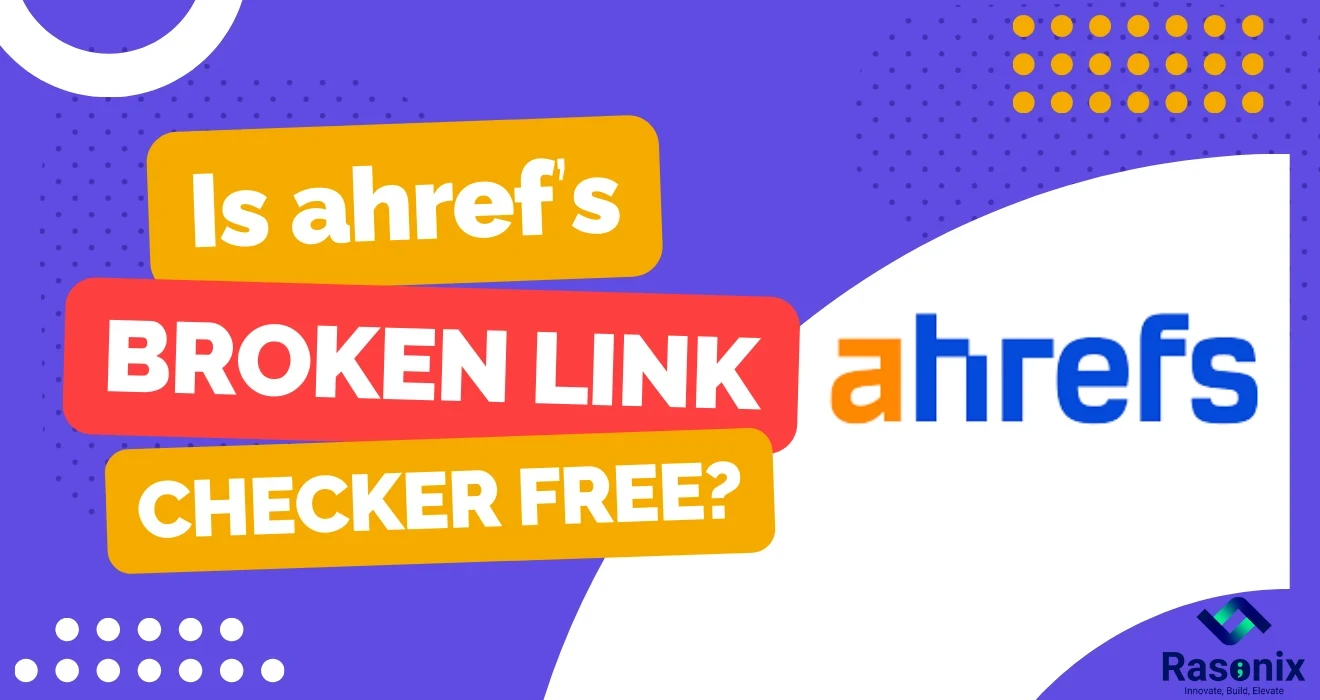Having a website is not the end of the story; you need users to find it. That is why learning how to increase website traffic organically is so important. Unlike paid ads, which we have to pay to keep running, organic traffic is sustainable and free in the long run, all while building credibility with your audience. Not only do they trust a business more if the website ranks high in search results, but it also leads to better engagement and, ultimately, success over time. Yet with millions of websites competing for attention, how do you make sure your website is seen?
The answer is to adopt a strategic, holistic approach. From learning and applying SEO techniques, developing high-quality content, employing social media, email campaigns and more; building organic traffic takes consistency and flexibility. In this post, we’ll outline practical, step by step ways to grow your business online so you can start seeing improvements in search visibility, attract your ideal audience and grow your authority online, all without spending a single dime on ads.
I. Understanding Organic Website Traffic and Its Importance

What Is Organic Traffic & Why Is It Compulsory for Your Website’s Growth?
Organic traffic is the term for visitors who come to your site via unpaid search results. Organic traffic delivers growth that lasts over time. BrightEdge released a study citing that organic search is responsible for 53.3% of all website traffic, which makes it the largest source of engagement.
Comparison: Organic vs. Other Traffic Sources
1. Direct Traffic: Visitors that go to your URL directly from their browser.
2. Paid Traffic: Users enter from paid ads (PPC campaigns).
3. Referral Traffic: Visitors who land on your website after being linked from different websites.
4. Social Traffic: Users enter from social media.
Strategic Benefits of Organic Traffic
1. Cost-Effective: There is no additional ongoing ad spend.
2. Sustainable Growth: Traffic will not need to be continuously purchased.
3. Higher Credibility: Organic results are generally more trusted than ads.
4. Better Conversion Rates: Visitors driven by SEO have greater intent.
II. Mastering SEO: The Core Strategy to Increase Organic Traffic

1. Comprehensive Keyword Research and Analysis
Identifying the most appropriate keywords aids your content in reaching the appropriate audience, and helps to increase website traffic organically. Discover what searchers are looking for concerning your content using tools such as Google Keyword Planner, Ahrefs, or SEMrush to find keywords with relatively high search volume and low competition.
Classifying and Properly Using Varied Types of Keywords
1. Short-Tail Keyword: Terms that are relatively broad like 'SEO tips'.
2. Long-Tail Keyword: Terms that are very specific like, “How to Setup Stripe Apple Pay on Woocommerce”.
3. LSI Keywords: Terms that describe relatedness so search engines create context for the content.
In-Depth Review Search Intent Examination to Align Content
The algorithm used by Google factors search intent, it cultivates relevancy for its searchers. Keywords should be relevant to intent, whether the searcher is looking for informative, navigational, transactional, or commercial information.
Competitive Keywords Analysis to Identify Opportunities
Use a keyword analysis tool such as Ahrefs or Ubersuggest to analyze competitive keyword analysis based on competition. Focus on identifying keywords where you could potentially rank higher by creating better-quality content.
Effective SEO starts with keyword research, identifying phrases potential visitors use when searching for content. Follow these steps:
1. Identify Search Intent: Focus on informational, navigational, and transactional keywords.
2. Use Keyword Research Tools: Platforms like Ahrefs, SEMrush, and Google Keyword Planner provide insights.
3. Analyze Competition: Study competitors’ top-performing keywords.
4. Target Long-Tail Keywords: Example: Instead of “website traffic,” use “how to increase website traffic organically free.”
On-Page SEO: Optimizing Content for Maximum Visibility
1. Optimizing Title Tags and Meta Descriptions
1. Incorporating your main keyword(s) into the title tags and meta descriptions will enhance the likelihood for your website to improve the click-through rate, or CTR.
2. For example: Increasing Your Website's Traffic Organically | 2025 Guide to SEO
2. Structure Content with Header Tags
1. Using H1, H2, and H3 correctly will create hierarchies that assist search engines with understanding the structure of your page.
2. For example: H2 = "How to Increase Your Website's Traffic Organically" H3 = Keyword Research Techniques"
3. Provide High-Quality and Valuable Content
1. Try and shoot for longer articles as in 2000 words that cover topics well.
2. For example: Blogs that are like listicles, case studies, tutorials
4. Optimize Images and Multimedia
1. Use descriptive file names for images, such as increase-traffic-seo-guide.png Compress the image in TinyPNG or similar software to create fast load times.
2. Add an alt text description that uses the keyword or phrase you're attempting to rank for, if it makes sense.
5. Improve the Speed of Your Website and make it Mobile Friendly
1. According to Google, 53% of mobile users abandon a website that requires more than 3 seconds to load.
2. Utilize the Google insights page: Page Speed Insight along with GTmetrix or other tools to run your site to analyze and improve load speed times.
6. Use Internal Linking to Improve both SEO and the User experience
1. For example: If you're discussing building backlinks, add a link from the current page to another page in your site "Effective Link-Building Strategies."
Off-Page SEO: Building Website Authority
1. Creating Quality Backlinks
1. The Skyscraper technique: Improve upon existing top-quality content in the top-tier rankings and reach out to ask for backlinks.
2. Broken link building: Find broken links from authority sites, and offer to replace them with your own.
3. Guest posting: Create valuable content for respectable blogs in your niche social game.
2. Leverage online directories and business listings.
1. Submit your website to Google My Business, Yelp, and create niche-specific directories to increase website traffic organically.
3. Leverage and utilize social media channels to build your SEO through indirect methods.
1. Share content on LinkedIn, Twitter and Facebook, to share with your connections.
2. Engage in discussion within the relevant groups on Facebook and LinkedIn.
III. Content Marketing: Driving Organic Growth with High-Value Content

1. Create a Complete Content Strategy
1. Utilize Google Analytics to find out what topics are getting the most engagement and increase website traffic organically.
2. Create a strategy to create a variety of blog posts, infographics, videos, and case studies.
2. Content Distribution to Increase Audience Reach
1. Repurpose Content: Blog posts can be converted into a YouTube video or LinkedIn articles, or repurposed as infographics.
2. Identify Influencers to Work with: Increased visibility occurs by doing guest posts and appearances on podcasts.
IV. Social Media & Community Engagement for Organic Website Traffic

1. Selecting Appropriate Social Media Platforms
1. LinkedIn: ideal for B2B interaction
2. Instagram & Pinterest: for niches with a heavy visual focus - fashion, design, food, etc.
3. Twitter: best for live updates and industry happenings
2. Using Social Media for Traffic Increase
1. Repost blog posts consistently with some engaging art.
2. Use appropriate hashtags (e.g. #SEOtips, #DigitalMarketing)
3. Comment on industry topics to attract organic followers
4. Design contests or giveaways to increase user interactions.
V. Email Marketing: A Proven Strategy to Drive Recurring Organic Traffic

1. Develop an Engaged Email Subscriber List
1. Provide something of value, such as a free ebook or exclusive report, as lead magnets.
2. Opt-in forms should be placed in areas with high conversion rates (sidebars, bottom of blog posts, exit pop-ups).
2. Develop Personalized Email Sequences
1. Utilize email at scale based on user behaviour.
2. For example, if someone reads an SEO blog, email them additional content updates related to the blog post they've just read.
3. Gain Click-Throughs for Your Email Content
1. Use great subject lines (ex: "Increase Website Traffic Organically by 200%, Here's How!").
2. Include clear CTAs that link back to your website.
VI. Performance Tracking and Continuous Improvement

1. Track Performance Metrics
1. Google Analytics: Identifies trends in organic traffic and user engagement.
2. Google Search Console: Indicate the ranking of keywords and highlight technical issues.
2. Optimize Based on Data
1. Identify pages with high bounce rates, then work on improving content experience.
2. Reinforce high-performing keywords, while optimizing lower-performing pages.
Case Study: A Website That Successfully Increased Organic Traffic
A 2024 case study from Ahrefs highlights how one eCommerce website achieved a 132% traffic increase in a short period of 6 months by simply implementing a few smart changes. What did they do?
1. They produced more long-form content.
The eCommerce site stopped writing short, overly simplistic posts that everyone else was writing and began providing meaningful, long articles that took care of customer questions, which kept readers engaged through longer article browsing time. Search engines reward that type of content, as do readers.
2. They created and pursued better backlinks to their content.
Instead of waiting for traffic to come to them, they actively worked on developing quality links to their content from reputable sites. More backlinks led to more credibility and ultimately higher rankings in Google search.
3. They made their site faster.
Nobody wants to browse a slow site. By optimizing images, refactoring their code, and improving caching, they made their site faster for user browsing and purchasing.
By focusing on these three simple yet powerful actions, companies managed to increase website traffic organically. Once again, emphasizing that high-quality content, good SEO practices, and a faster site can make a real difference!
Conclusion
Growing a website doesn’t happen overnight, but knowing how to increase website traffic organically means you’re giving yourself the best chance for sustained success. When you focus on SEO optimization, content marketing, and audience engagement, you develop a digital presence that continues to attract visitors over time. The neat thing about organic traffic is that it doesn't just bring numbers; it attracts real, interested users who are more likely to engage, convert and potentially become repeat customers.
Keep in mind, however, that search engines tend to change often and user behaviour can also change with time. The secret is continuing to be consistent when adopting almost any strategy, while also having the ability to adapt and optimize as you go. Continue to refine your content, update your SEO strategies, and analyze the performance metrics so you can continue to optimize. Over time, the work that you put into this will amplify, and your website will become a magnet for traffic. To maximize organic traffic results, leveraging the right SEO optimizer tools can make strategy execution faster and more effective.
If you are serious about growing your website, now is the time to start implementing these organic traffic ideas. But, we know that, with all the chaos running a business, you may not have the time to put together an SEO plan, create content, or manage your digital marketing. That’s where Rasonix comes in!
Rasonix specializes in SEO-driven web development, organic traffic growth strategies, and customized digital solutions to help businehow to increase website traffic organicallysses like yours grow in a more competitive online environment. We are here to help with anything from a fully optimized site to professional content marketing or a customized SEO plan.
Want to increase website traffic organically? Connect with Rasonix today and together we will put together a strategy to achieve real, sustainable results. Contact Us Now to start building your website the right way!
























 Subscribe Now
Subscribe Now